Development of Autonomous Unmanned Aerial Vehicle for Environmental Protection Using YOLO V3 †
Abstract
1. Introduction
- Classifying garbage present in the environment by passing the information to the municipality department.
- Monitors the air pollution around the society and alerts the people with an alarm to warn about the condition present. The accuracy attained by the UAV model is 91%, which is more when compared with the previous model. Table 1 represents the comparative study made. Based on the analysis made from Worldometer, the average deployment of CO2 emissions in the atmosphere by some of the countries is mentioned in Figure 1.
2. Simulation Design of Air Monitoring System
3. Drone Design
4. Conclusions
Author Contributions
Funding
Institutional Review Board Statement
Informed Consent Statement
Data Availability Statement
Conflicts of Interest
References
- Singh, V.; Singh, D.; Kumar, H. Efficient Application of Deep Neural Networks for Identifying Small and Multiple Weed Patches Using Drone Images. IEEE Access 2024, 12, 71982–71996. [Google Scholar] [CrossRef]
- Yu, M.; Zhang, J.; Zhu, L.; Liang, S.; Lu, W.; Ji, X. An Intelligent System for Outfall Detection in UAV Images Using Lightweight Convolutional Vision Transformer Network. IEEE J. Sel. Top. Appl. Earth Obs. Remote Sens. 2024, 17, 6265–6277. [Google Scholar] [CrossRef]
- Wang, S.; Jiang, H.; Li, Z.; Yang, J.; Ma, X.; Chen, J.; Tang, X. PHSI-RTDETR: A Lightweight Infrared Small Target Detection Algorithm Based on UAV Aerial Photography. Drones 2024, 8, 240. [Google Scholar] [CrossRef]
- Zhu, Y.; Tan, Y.; Chen, Y.; Chen, L.; Lee, K.Y. UAV Path Planning Based on Random Obstacle Training and Linear Soft Update of DRL in Dense Urban Environment. Energies 2024, 17, 2762. [Google Scholar] [CrossRef]
- Yusuf, M.O.; Hanzla, M.; Rahman, H.; Sadiq, T.; Al Mudawi, N.; Almujally, N.A.; Algarni, A. Enhancing Vehicle Detection and Tracking in UAV Imagery: A Pixel Labeling and Particle Filter Approach. IEEE Access 2024, 12, 72896–72911. [Google Scholar] [CrossRef]
- Lyu, L.; Jiang, H.; Yang, F. Improved Dung Beetle Optimizer Algorithm with Multi-Strategy for Global Optimization and UAV 3D Path Planning. IEEE Access 2024, 12, 69240–69257. [Google Scholar] [CrossRef]
- Xia, J.; Liu, Y.; Tan, L. Joint Optimization of Trajectory and Task Offloading for Cellular-Connected Multi-UAV Mobile Edge Computing. Chin. J. Electron. 2024, 33, 823–832. [Google Scholar] [CrossRef]
- Aldossary, M. Optimizing Task Offloading for Collaborative Unmanned Aerial Vehicles (UAVs) in Fog–Cloud Computing Environments. IEEE Access 2024, 12, 74698–74710. [Google Scholar] [CrossRef]
- Sângeorzan, D.D.; Păcurar, F.; Reif, A.; Weinacker, H.; Rușdea, E.; Vaida, I.; Rotar, I. Detection and Quantification of Arnica montana L. Inflorescences in Grassland Ecosystems Using Convolutional Neural Networks and Drone-Based Remote Sensing. Remote Sens. 2024, 16, 2012. [Google Scholar] [CrossRef]
- Xiao, M.; Min, W.; Yang, C.; Song, Y. A Novel Network Framework on Simultaneous Road Segmentation and Vehicle Detection for UAV Aerial Traffic Images. Sensors 2024, 24, 3606. [Google Scholar] [CrossRef] [PubMed]
- Wang, T.; Na, X.; Nie, Y.; Liu, J.; Wang, W.; Meng, Z. Parallel Task Offloading and Trajectory Optimization for UAV-Assisted Mobile Edge Computing via Hierarchical Reinforcement Learning. Drones 2025, 9, 358. [Google Scholar] [CrossRef]
- Yuan, X.; Xu, J.; Li, S. Design and Simulation Verification of Model Predictive Attitude Control Based on Feedback Linearization for Quadrotor UAV. Appl. Sci. 2025, 15, 5218. [Google Scholar] [CrossRef]
- Dai, K.; Zhu, J.; Hou, H.; Li, Q.; Ma, X.; Yu, H. A LiDAR–Camera Spatiotemporal Synchronization Method for Unmanned Aerial Vehicle-Based Ground Target Perception. IEEE Trans. Instrum. Meas. 2025, 74, 1008715. [Google Scholar] [CrossRef]
- Wang, Y.; Xu, T.; Li, J. FocusTrack: A Self-Adaptive Local Sampling Algorithm for Efficient Anti-UAV Tracking. IEEE Trans. Geosci. Remote Sens. 2025, 63, 5003214. [Google Scholar] [CrossRef]

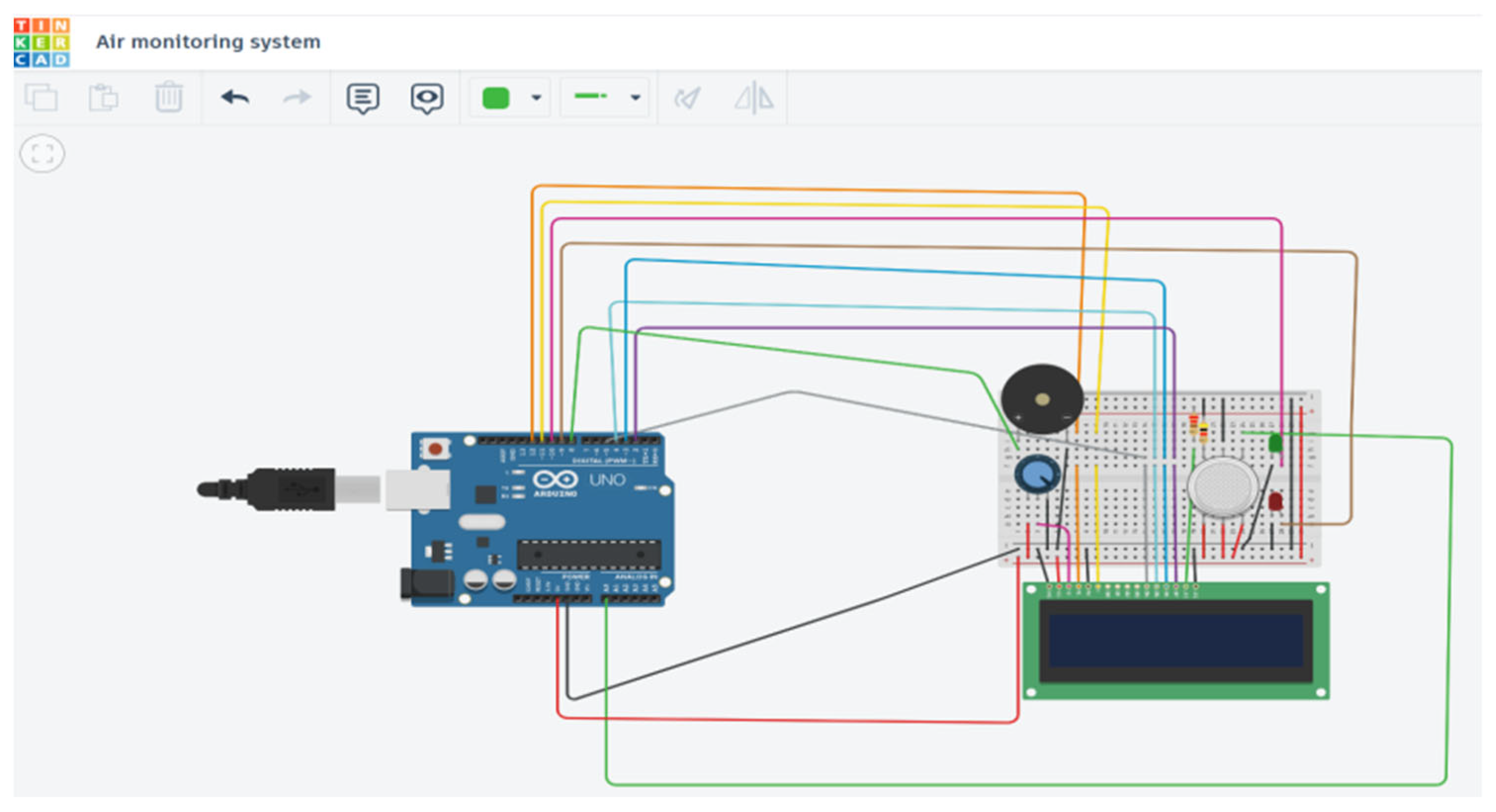


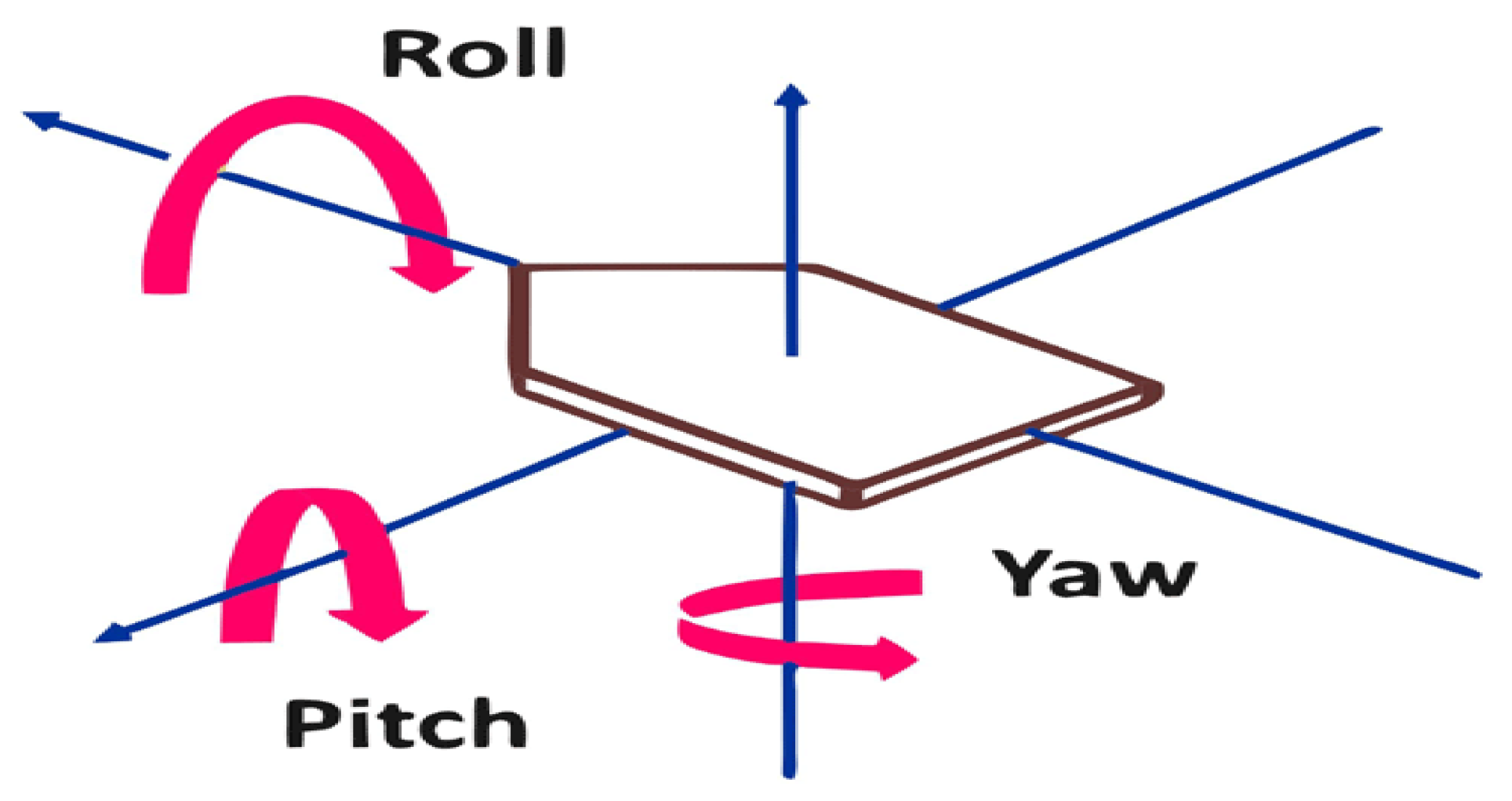

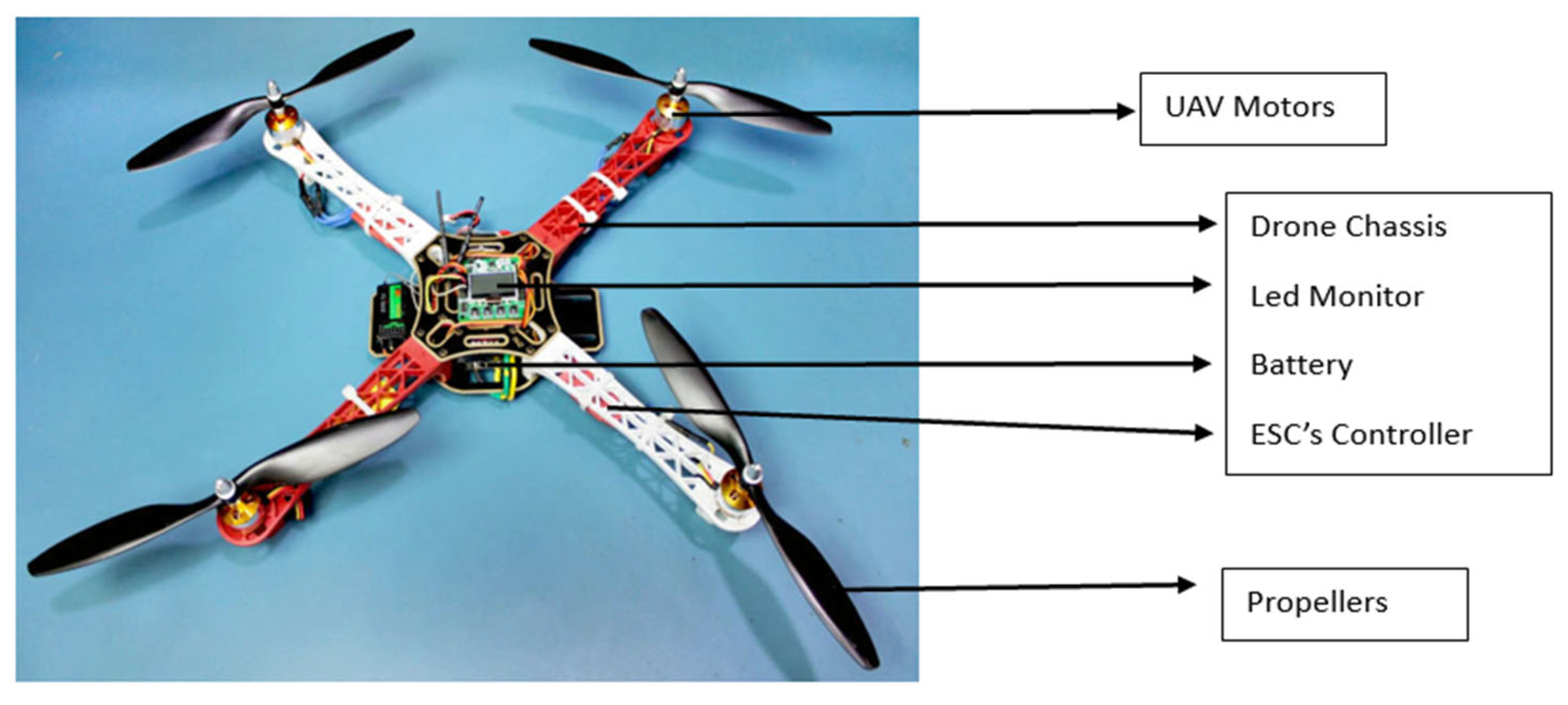
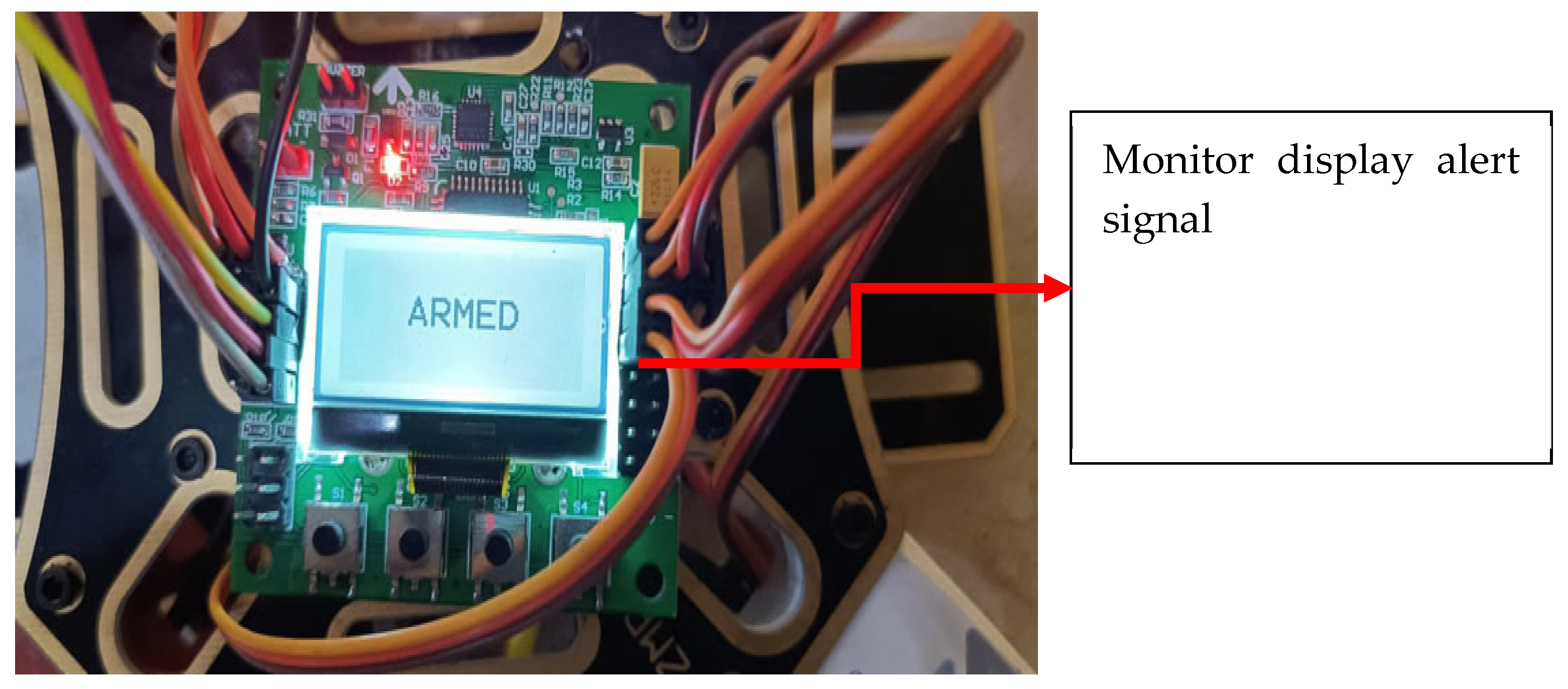
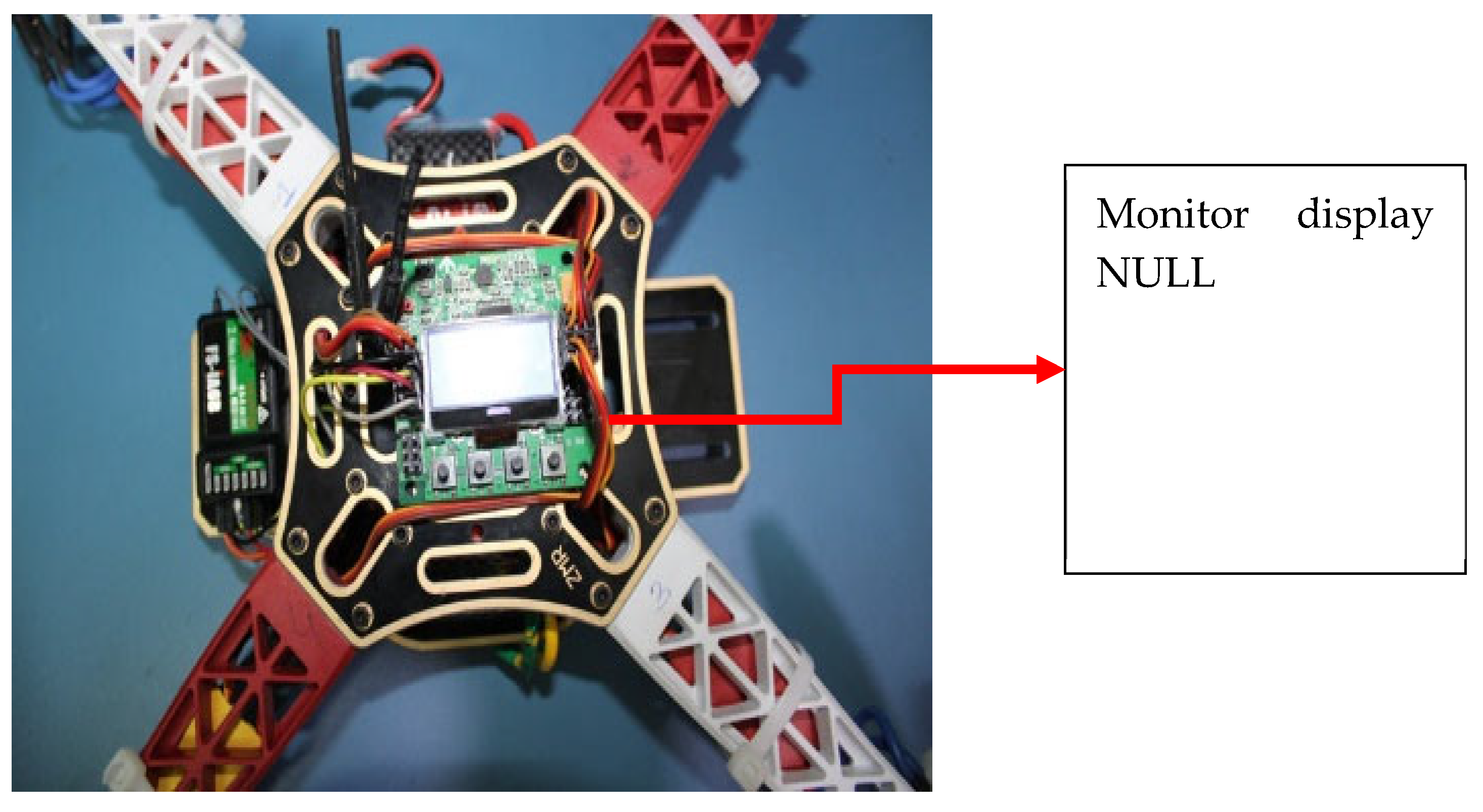
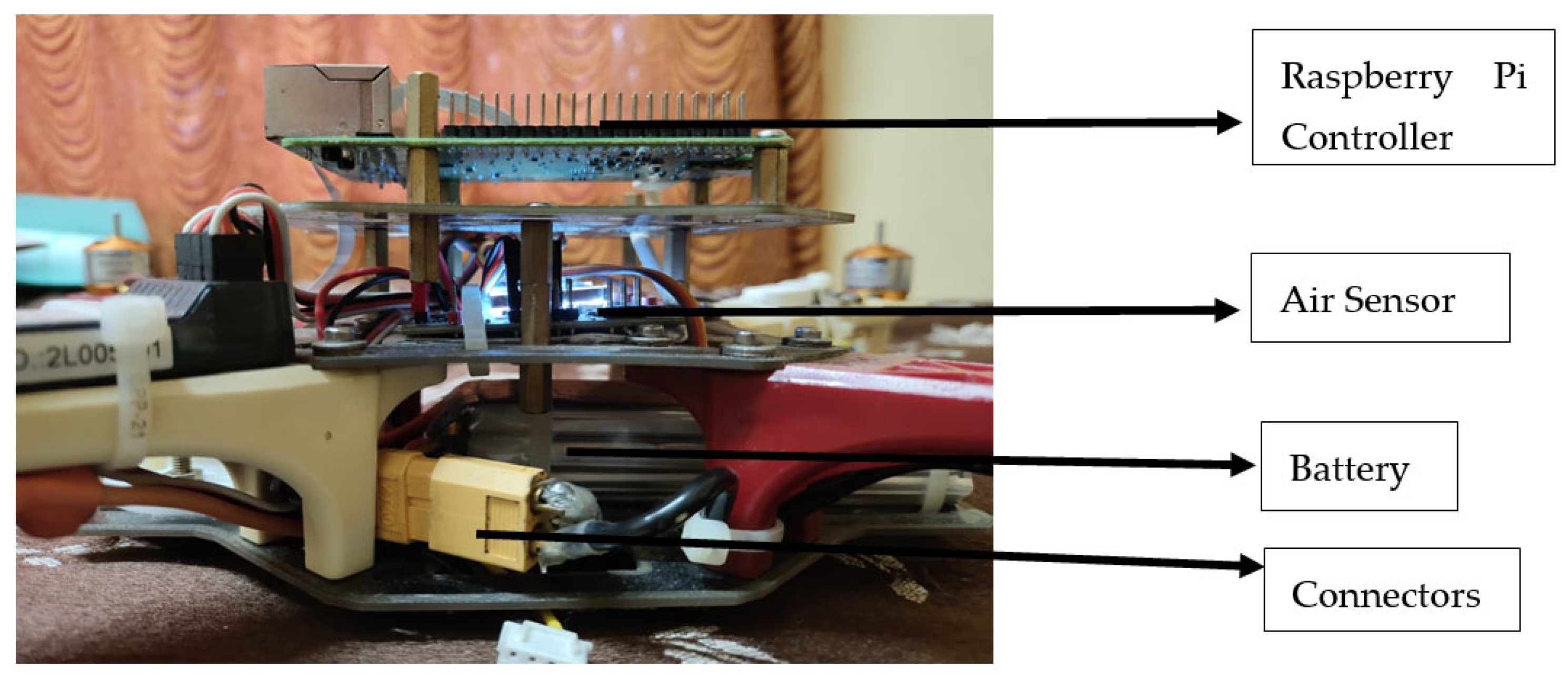

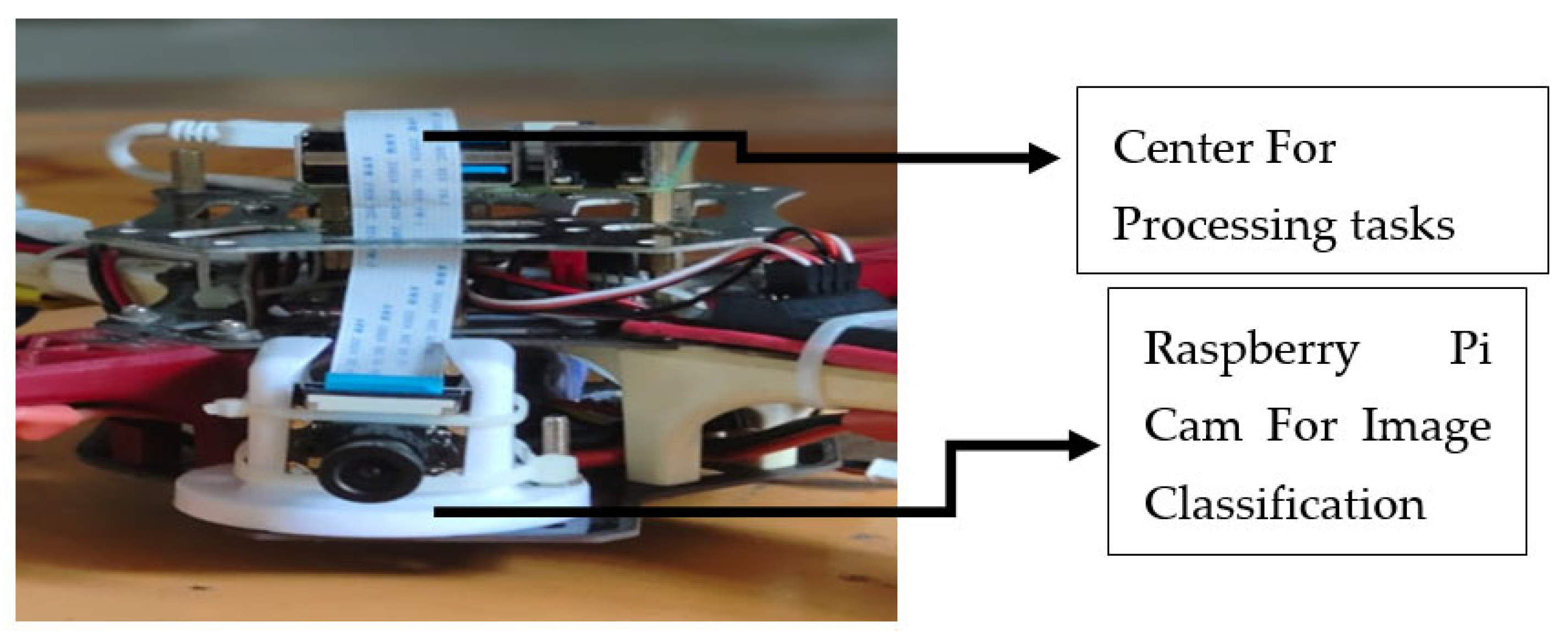
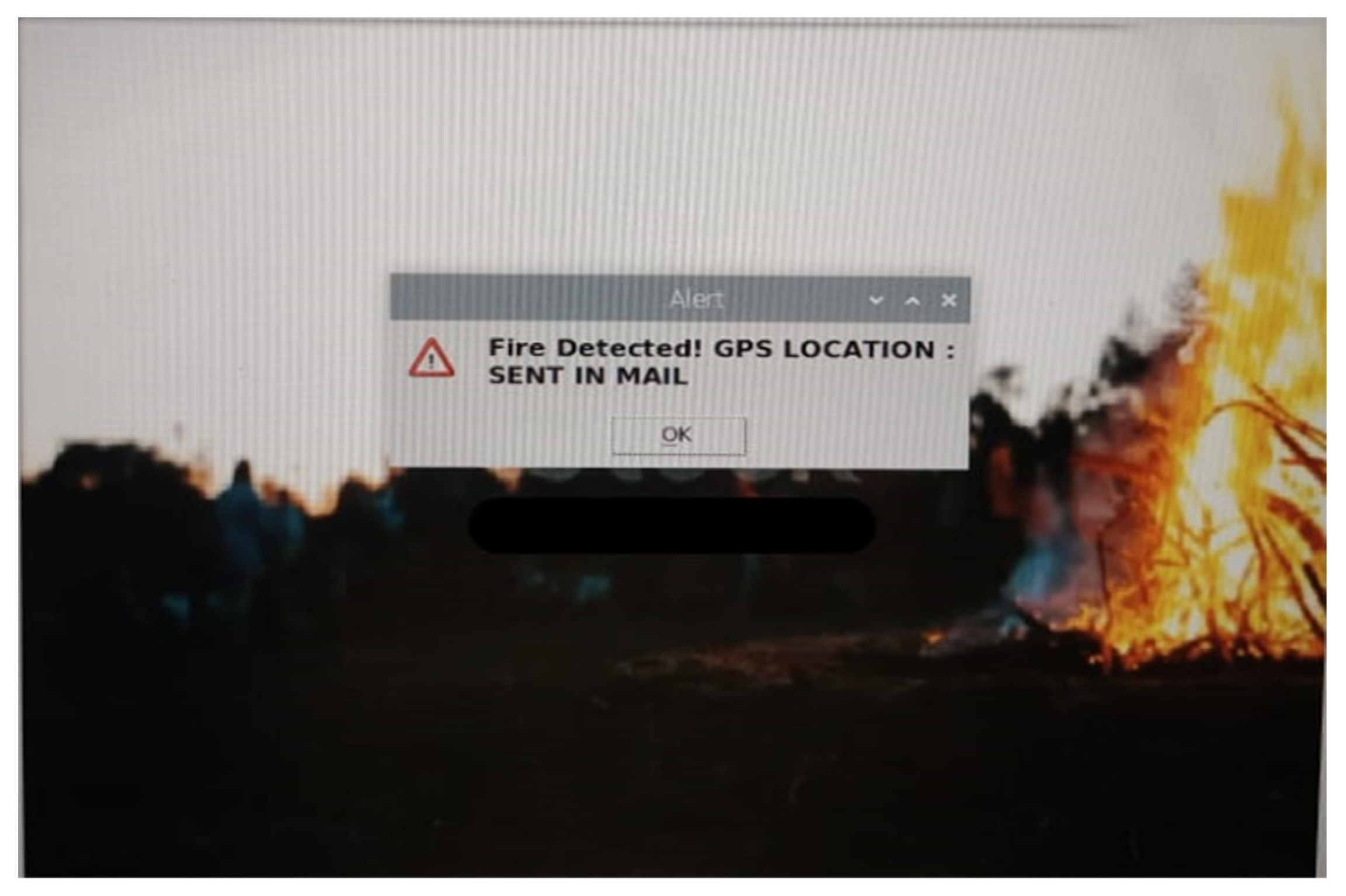
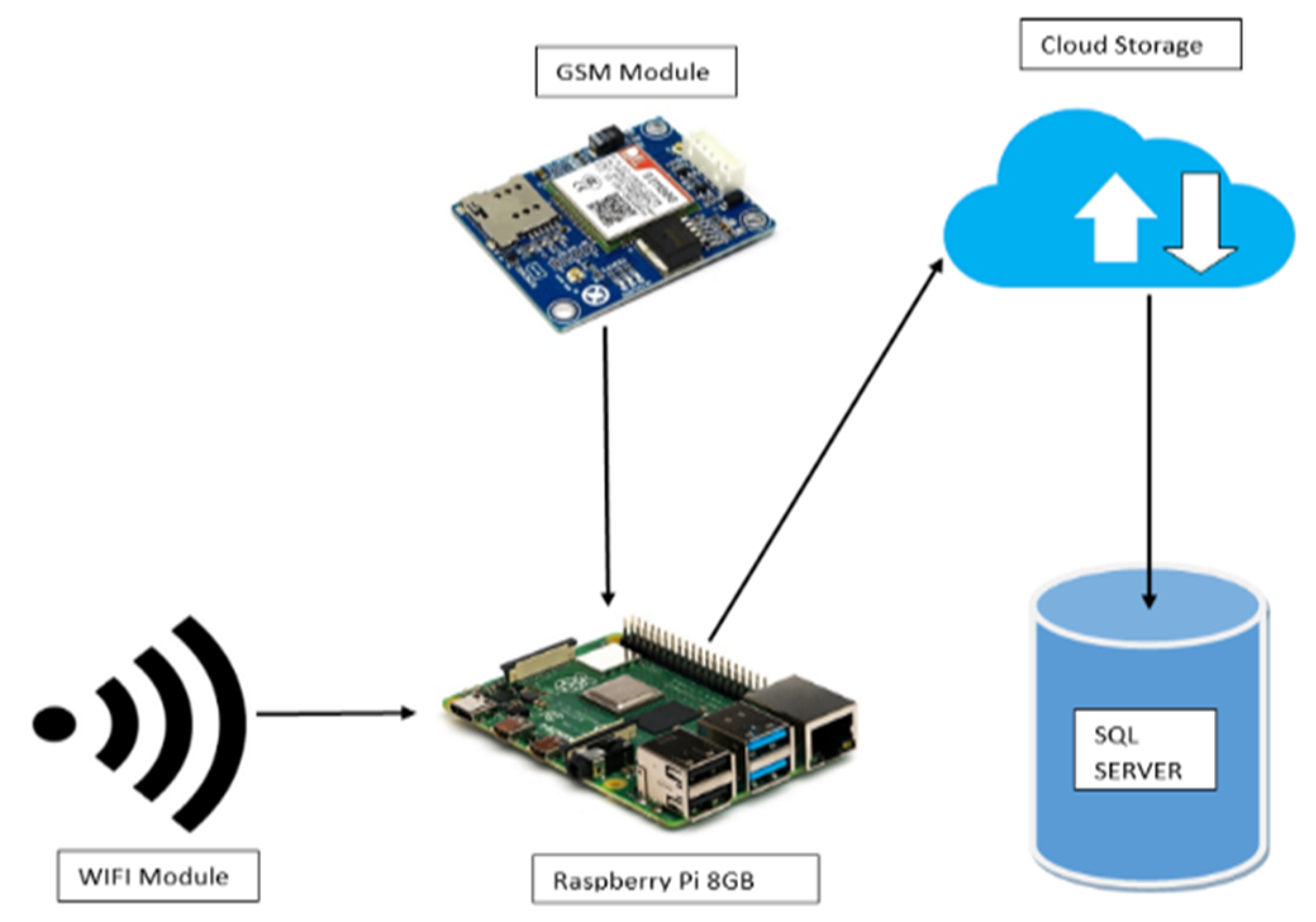
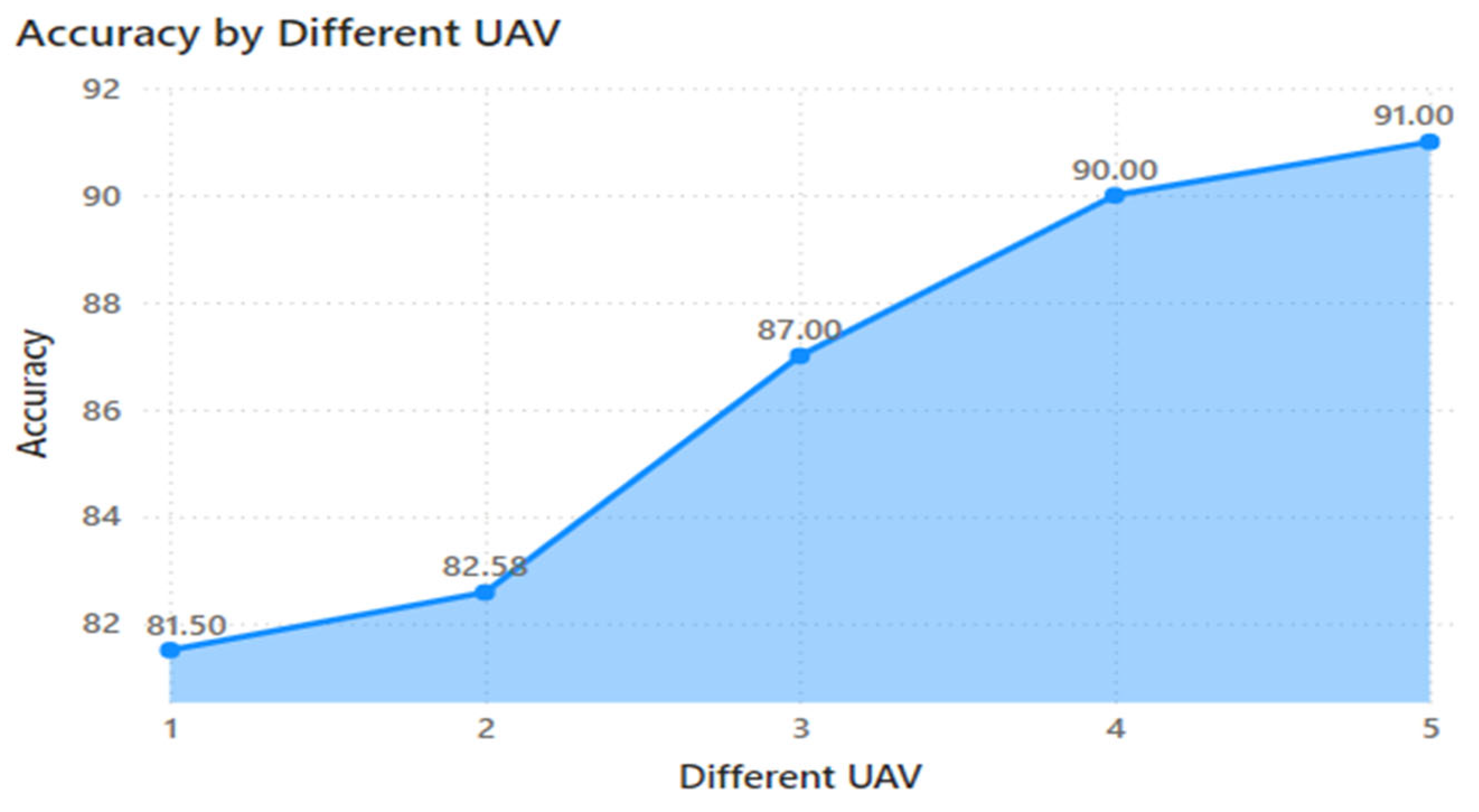
| Reference Number | Objective | Proceeded Works |
|---|---|---|
| [1] | Improved localization and classification of camouflage targets with respect to traditional target detection and localization modeling techniques in natural background. Capable of detecting small patches of weed (similar color behavior) from its background with an accuracy of 90.5%. | It is difficult to distinguish and detect weeds from crops. |
| [2] | Developed an intelligent outfall detection system based on the proposed model | Aerial images rely heavily on visual interpretation by skilled experts, which is time-consuming and inefficient. |
| [4] | It is proposed to use the meritocracy technique to stabilize the algorithm and ensure that the neural network does not contribute to training failures. | In densely populated areas, wind is considered in the three-dimensional (3D) path planning challenge for unmanned aerial vehicles (UAVs). |
| [5] | This model outperforms current traffic monitoring approaches in terms of detection and tracking accuracy by 0.87 and 0.92, respectively, using the Aerial Car dataset and 0.84 and 0.88, respectively, using the AU-AIR datasets. | Systems must be capable of detecting and tracking autonomous vehicles for intelligent management and control of transportation. |
| [6] | The IDBO method’s effectiveness and stability in optimizing 3D Dung Beetle pathways for drones. | Finding the optimal routes through complex domains is a challenging and computationally intensive optimization procedure in high-dimensional path planning. |
| Feature | UAVs | Terrestrial Stations | Satellites |
|---|---|---|---|
| Temporal Resolution | Real-time | Periodic | Low (hours to days) |
| Area Coverage | Moderate & flexible | Very limited (static) | Very broad |
| Cost | Moderate & scalable | High for dense networks | Very high |
| Accessibility in Remote Areas | Excellent | Poor | Good |
| Rapid Deployment | Yes | No | No |
Disclaimer/Publisher’s Note: The statements, opinions and data contained in all publications are solely those of the individual author(s) and contributor(s) and not of MDPI and/or the editor(s). MDPI and/or the editor(s) disclaim responsibility for any injury to people or property resulting from any ideas, methods, instructions or products referred to in the content. |
© 2025 by the authors. Licensee MDPI, Basel, Switzerland. This article is an open access article distributed under the terms and conditions of the Creative Commons Attribution (CC BY) license (https://creativecommons.org/licenses/by/4.0/).
Share and Cite
Loganathan, V.; Ravikumar, D.; Manibha, M.P.; Kesavan, R.; Kusala Kumar, G.R.; Sasikumar, S. Development of Autonomous Unmanned Aerial Vehicle for Environmental Protection Using YOLO V3. Eng. Proc. 2025, 87, 72. https://doi.org/10.3390/engproc2025087072
Loganathan V, Ravikumar D, Manibha MP, Kesavan R, Kusala Kumar GR, Sasikumar S. Development of Autonomous Unmanned Aerial Vehicle for Environmental Protection Using YOLO V3. Engineering Proceedings. 2025; 87(1):72. https://doi.org/10.3390/engproc2025087072
Chicago/Turabian StyleLoganathan, Vijayaraja, Dhanasekar Ravikumar, Maniyas Philominal Manibha, Rupa Kesavan, Gokul Raj Kusala Kumar, and Sarath Sasikumar. 2025. "Development of Autonomous Unmanned Aerial Vehicle for Environmental Protection Using YOLO V3" Engineering Proceedings 87, no. 1: 72. https://doi.org/10.3390/engproc2025087072
APA StyleLoganathan, V., Ravikumar, D., Manibha, M. P., Kesavan, R., Kusala Kumar, G. R., & Sasikumar, S. (2025). Development of Autonomous Unmanned Aerial Vehicle for Environmental Protection Using YOLO V3. Engineering Proceedings, 87(1), 72. https://doi.org/10.3390/engproc2025087072









